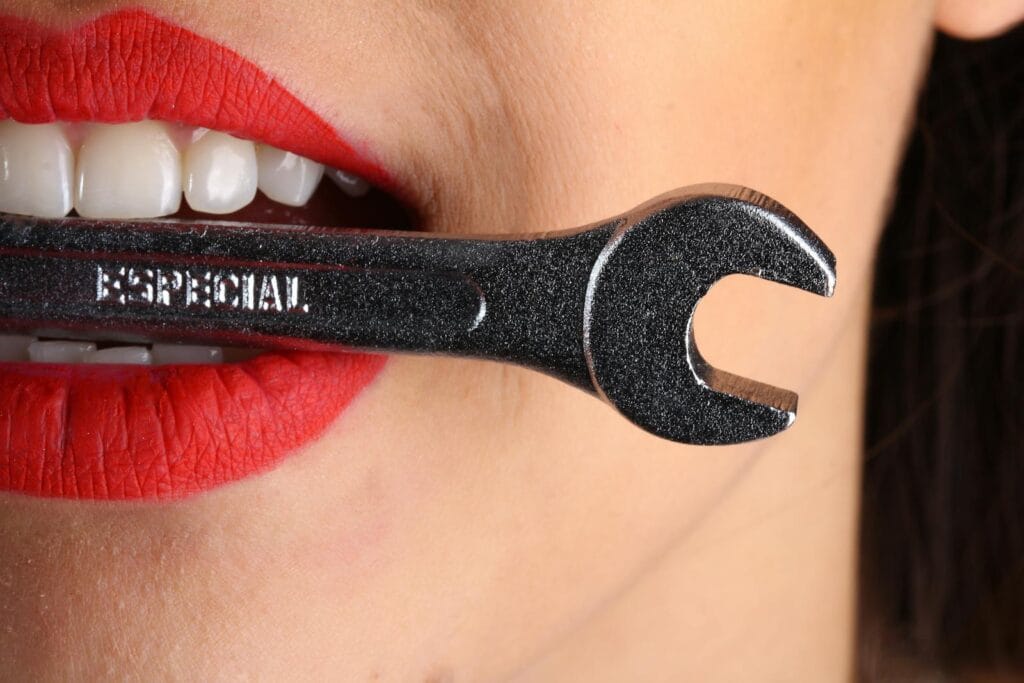
Unveiling the Facts Behind Whitening Toothpaste!

- Common Ingredients in Whitening Toothpaste
- How Teeth Whitening Agents Work
- Internal Factors That Cause Yellow Teeth
- Potential Side Effects of Teeth Whitening
Teeth are the hardest organs in the body, located in the mouth and playing a role in the digestion process. The color of teeth is determined by dentin, modifications in enamel thickness, and translucency. The deposition of pigments on the teeth can alter their color. External staining can be caused by food, beverages, nicotine, or tar from smoking.
The natural color of enamel is translucent white, and the underlying tooth structure tends to be darker. Dentin, located beneath the enamel, normally has a yellowish color. However, due to its porous structure and the presence of nerve fibers, the dentin’s color can show through, making the teeth appear darker or yellowish-brown. There are various methods for teeth whitening, one of which is the use of toothpaste containing whitening agents.
Common Ingredients in Whitening Toothpaste
Toothpaste generally contains fluoride to prevent cavities, mild abrasives to remove plaque and stains, and antibacterial agents to maintain gum health. The primary whitening ingredients typically include hydrogen peroxide, carbamide peroxide (or urea peroxide), and sodium fluoride. Teeth whitening agents are divided into two categories: abrasive agents and chemical whiteners.
Abrasive agents function to scrub off surface stains caused by food, drinks, and smoking. These ingredients should be used according to recommendations, usually twice a day, since excessive use may lead to enamel thinning. Chemical whiteners work by oxidizing and removing stains within the enamel. It is essential to monitor their concentration levels, as excessive use may cause tooth sensitivity.
How Teeth Whitening Agents Work

Teeth whitening agents work through two mechanisms: removing external stains (abrasives and detergents) and brightening the tooth color from within (bleaching).
Abrasive Method
The abrasive method uses ingredients like silica, calcium carbonate, and alumina to gently scrub stains from the teeth. The addition of detergents like sodium lauryl sulfate (SLS) helps remove stubborn stains. This method is effective but only works on surface stains, not on intrinsic discoloration.
Bleaching Method
Meanwhile, the bleaching process uses hydrogen peroxide and carbamide peroxide to oxidize the pigments responsible for deep stains. This method is considered more effective for whitening teeth, but without professional supervision, the low concentration found in over-the-counter products requires longer usage for noticeable results.
For individuals with already bright or clean teeth, toothpaste containing hexametaphosphate (SHMP) or pyrophosphate can help prevent plaque and stain buildup. Fluoride content also strengthens enamel and helps “seal” microscopic cavities. However, these ingredients serve to prevent staining rather than significantly enhance tooth color.
Internal Factors That Cause Yellow Teeth
Even with consistent brushing, internal factors can cause teeth to appear yellow, including medication use during tooth development, pulp changes due to disease, and natural structural changes in teeth over time. The thinning of enamel (which is naturally white and translucent) occurs due to friction from food, drinks, and brushing.
As enamel wears down, the underlying dentin (naturally yellow) becomes more visible. Additionally, accumulated stains that are not properly cleaned can become harder to remove over time. Genetics also play a role in tooth color, some people naturally have thicker or thinner enamel, which affects how yellow their teeth appear.
Potential Side Effects of Teeth Whitening
The use of teeth whitening agents can cause side effects such as tooth sensitivity and irritation of the oral mucosa. Teeth whitening can be done at home or under a dentist’s supervision in a dental clinic. A dentist’s role is crucial in diagnosing the appropriate treatment for each individual’s needs. The results depend on the concentration of the whitening agent and the duration of use.
However, it is essential to be aware of the potential side effects of the whitening process. Before being marketed, teeth whitening products should be tested in a laboratory to ensure the safety of their ingredients, ensure their effectiveness, and minimize the risk of side effects such as tooth sensitivity or irritation. Through laboratory testing, manufacturers can guarantee quality and increase consumer confidence in their teeth whitening products.
Author: Delfia
Editor: Sabilla Reza
References:
Bayahu, Cintia, dkk. 2019. Uji Efektivitas Pasta Gigi Pemutih terhadap Perubahan Warna Gigi Ekstrinsik. e-GiGi Vol. 9 No 2. Hal 204-208.
Febryanto, Eko. 2019. Efektivitas Pasta Gigi Pemutih Terhadap Perubahan Warna Gigi Ekstrinsik. JKGT Vol. 1. No. 2. Hal 5-7.
Meizarini, Asti dkk., 2005. Bahan Pemutih Gigi dan Sertifikat ADA/ISO. Maj. Ked. Gigi. (Dent.J), Vol 38. No. 2. Hal 73-76.



